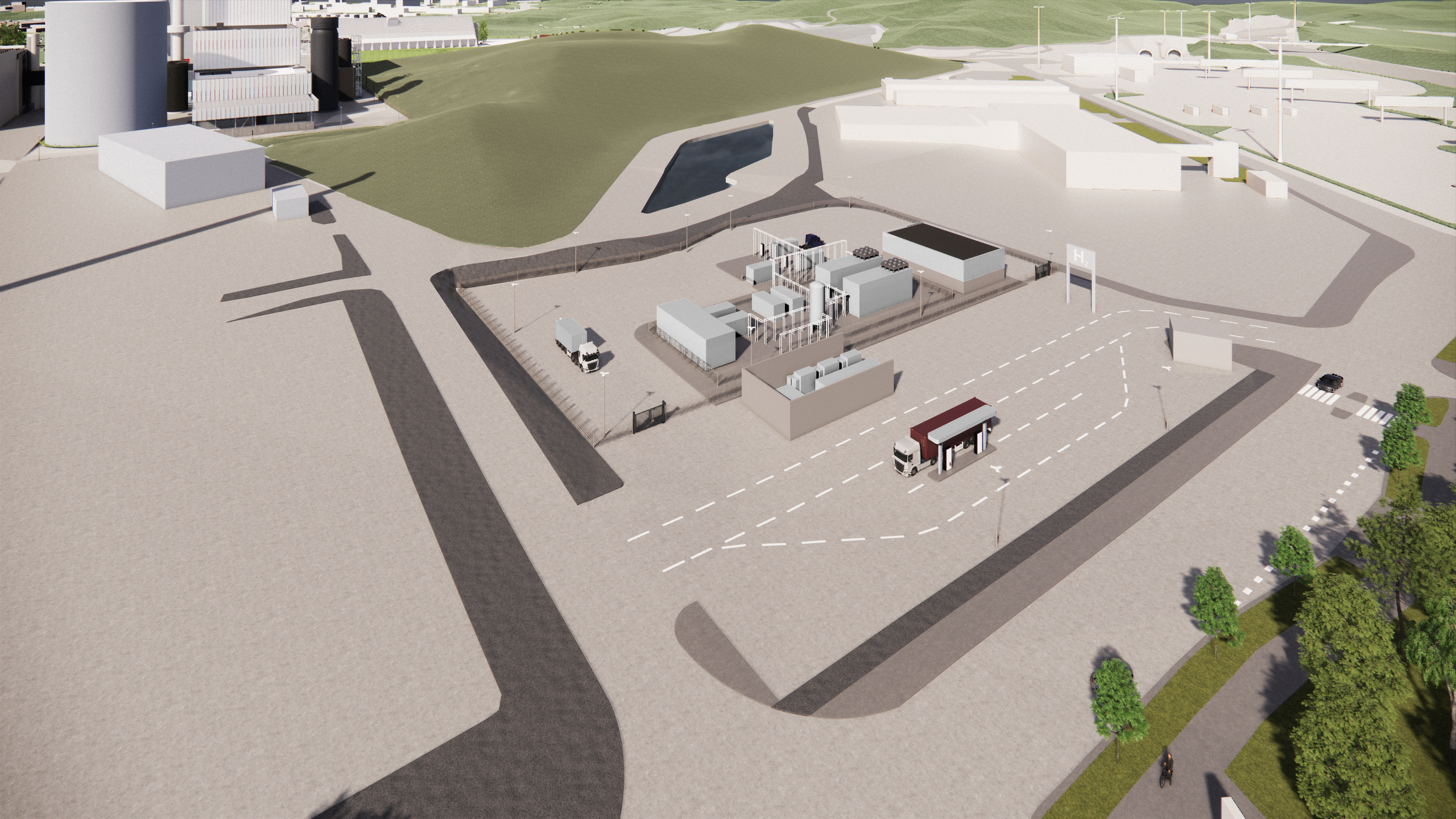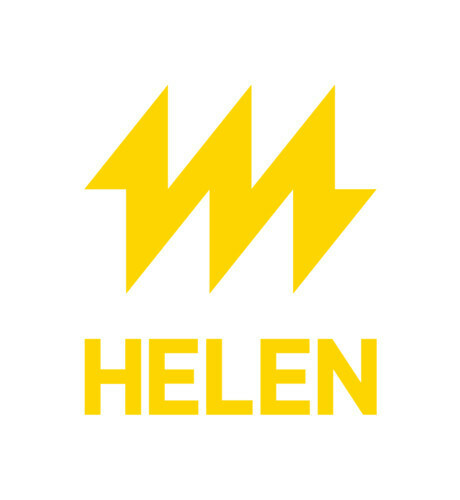




Keep this story going! Share below!
The world needs energy systems that are reliable and secure, and it is important that the resources used by industries are sustainable. Helsinki is an example of success in energy transition. Helen will build Helsinki’s first green hydrogen production plant in Vuosaari. In the 3H2 plant, hydrogen will be produced with renewable electricity, which means that the production is emission-free. This will try to solve SDGs 7, 9, 11 and 13.
The Helsinki Hydrogen Hub pilot project, 3H2, is the world’s first hydrogen initiative to integrate four key sectors—electricity, transportation, heating, and hydrogen—while enabling flexibility between them. The goal is to begin hydrogen production at the new Vuosaari plant in 2026 and open an adjacent hydrogen filling station in 2027.
The hydrogen produced will primarily serve heavy transport through the new filling station, with the option to deliver it to other customers in containers. Strategically located near Helsinki’s district heating network and the busy Vuosaari Harbour, the plant will also capture and utilize waste heat from the production process in Helen’s district heating system. This integration ensures an exceptional overall energy efficiency of more than 90%.
Helen’s Tuukka Hartikka, Vice President Hydrogen & Power to X, states of the pilot that: “We are building a pilot plant in Vuosaari where we are testing how well this sector integration between green electricity, district heating, and hydrogen works together, and the aim for this pilot project is to build capabilities and to learn.”
According to Hartikka, learning is one of the key outcomes of this pilot project, which allows Helen to proceed to larger-scale hydrogen production plants. In this case, green hydrogen is all about building an ecosystem as well. Various parties are needed for the project to succeed, including technology providers, regulators, authorities, off-takers, and partners building the infrastructure for green hydrogen.

Credits: Helen
Helen’s green hydrogen pilot project was inspired by the company’s strong commitment to achieving carbon neutrality by 2030 and phasing out combustion-based energy production by 2040. The project reflects Helen’s vision of creating a sustainable, flexible energy system for Helsinki by integrating electricity, heating, transport, and hydrogen production. It was driven by the desire to explore how these sectors can work together to enhance energy efficiency, reduce emissions, and increase system flexibility.
Equally important, the pilot represents a learning opportunity — a way for Helen to build new capabilities and gain practical experience in green hydrogen production before scaling up its operations. Collaboration also serves as a key source of inspiration, as the project brings together multiple partners across industries, regulation, and technology to create a functioning hydrogen ecosystem. Finally, the initiative aligns with both Finland’s clean energy goals and the UN Sustainable Development Goals, reinforcing Helen’s role as a forward-looking innovator in the global energy transition. By pioneering this project, Helen positions itself as an innovation leader, opening up new business opportunities in heavy transport, industrial use, and grid flexibility services.
The project aims to pilot green hydrogen production and optimize it based on hydrogen demand, renewable electricity generation, and dynamics in the electricity market. A key objective is to maximize energy efficiency while enhancing flexibility within the overall energy system. At the 3H2 plant, hydrogen will be produced using renewable electricity, ensuring emission-free production. Unlike conventional hydrogen made from fossil fuels, this process significantly reduces carbon dioxide emissions, making green hydrogen an appealing solution—particularly for heavy transport and other sectors where direct electrification remains difficult.
Helen has set an ambitious target to achieve carbon-neutral energy production by 2030 and to completely phase out combustion-based energy generation by 2040. Its electricity already comes largely from wind, solar, hydro, and nuclear power sources. In heat production, Helen continues to expand the use of sustainable bioenergy, electric boilers, and heat pumps that utilize waste and environmental heat. Looking ahead, hydrogen is expected to become an essential component of Helen’s fully sustainable energy system.
The project was granted an investment aid of EUR 8.25 million for large-scale demonstration projects on new energy technology by the Ministry of Economic Affairs and Employment of Finland. Early-stage solutions are more expensive than fossil-based ones, so support is needed in the early stages.
Helen’s green hydrogen investment delivers clear strategic value. It positions the company as a first mover in Helsinki, opening new revenue streams in heavy transport and industrial sectors. By integrating electricity, heat, and hydrogen systems, the project enhances energy efficiency and grid flexibility. It strengthens Helen’s ESG profile through measurable CO₂ reductions and supports its carbon neutrality goals. The pilot also builds internal innovation capacity and benefits from public funding, reducing financial risk while aligning with national energy policy.
Hydrogen plays a vital role in building sustainable energy systems. It can replace fossil fuels in hard-to-abate sectors that are difficult to electrify directly and serves as an effective solution for large-scale energy storage. Green hydrogen is produced from water through electrolysis, a process that relies on renewable electricity and generates oxygen and waste heat as by-products. In this way, hydrogen enables the storage and flexible use of renewable energy from wind and solar sources, thereby strengthening the resilience and sustainability of the overall energy system.
Moreover, the waste heat created during hydrogen production can be efficiently recovered and utilized in district heating networks with the aid of heat pumps. Most hydrogen projects rely on newly built wind and solar power plants, meaning they place minimal demand on existing electricity capacity. By 2025, 90% of Helen’s electricity production will already be low-emission. Hydrogen also has a wide range of applications—it can be used to produce fuels, chemicals, and even protein.
The 3H2 project is expected to reduce CO₂ emissions by approximately 3,700 tonnes annually, based on the combined effects of replacing fossil fuels in heavy transport and recovering waste heat for Helsinki’s district heating network. This efficient use of by-products makes the 3H2 plant one of the most energy-efficient hydrogen projects to date.
Get stories of positive business innovations from around the world delivered right to your inbox.

Helen Ltd, formerly Helsinki Energy, is one of Finland’s largest energy companies, established in 1909, selling district heating and district cooling in Helsinki, as well as electricity throughout Finland. Additionally, Helen offers solutions for regional and renewable energy and electric transport. The company systematically reduces its emissions, and its goal is to phase out combustion-based energy production by 2040.